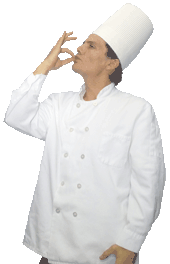At WiseGEEK, we're committed to delivering accurate, trustworthy information. Our expert-authored content is rigorously fact-checked and sourced from credible authorities. Discover how we uphold the highest standards in providing you with reliable knowledge.
What is a Waffle Cone?
A waffle cone is a type of pastry. It is made out of a thin waffle that has been rolled so as to have a tight point at one end and a large opening at the other. A waffle cone will usually have ice cream, frozen custard, or soft serve placed inside of it. It is considered to be part of the broader ice cream cone family of pastries.
The waffle cone is considered to be the original style of ice cream cone. Street vendors in New York City are rumored to have started selling ice cream in various types of edible bowls and cups in the 1890s; the ice cream cone, however, did not become popular until the Louisiana Purchase Exposition in 1904. The event, also known as the St. Louis World’s Fair, was where ice cream cones became known to the world.

The often-told legend of the invention of the ice cream cone states that an ice cream vendor at the World’s Fair ran out of dishes to serve his desserts in. Next to the ice cream vendor’s stall was that of Ernest A. Hamwi, a Syrian immigrant selling the waffle-like dessert zalabia. Hamwi reportedly rolled one of his zalabia into a cone, placed his neighbor’s ice cream in it, and solved the other vendor’s problem. In doing so, he also invented one of America’s favorite desserts – or so the legend goes.
There are other types of ice cream cones besides the waffle cone. Cake cones, pretzel cones, and sugar cones are all popular types of ice cream cones. Styles can differ as well. Cone-cups are similar to ice cream cones, but have flat bottoms instead of the point of a cone. Kiddy cones are simply smaller versions of ice cream cones.
Waffle cones have other culinary uses besides holding ice cream. Turned upside down and iced, they can be used as towers, trees, and other cone-shaped objects on cakes and in gingerbread houses. They also make pointed hats for confection-clowns, and can be used as edible supports for other culinary creations.
AS FEATURED ON:
AS FEATURED ON:










Discuss this Article
Post your comments